
[病友作品]身体荣光
社会融入编前语:《身体荣光》(The Glory of the Body)是瑞士病友Phlippe Rahmy一个摄影作品展。他作为一个坐在轮椅上的瓷娃娃,用摄影机记录了自己与众不同的身体,挑战既有的美的标准,促进每一个看到这些照片的人思考:“常态”这一个词能够应用于人的身体吗?Phlippe这篇文章谈到了自己的创作想法,包含他对残障、对艺术的思考,都给人启发。
“我认为
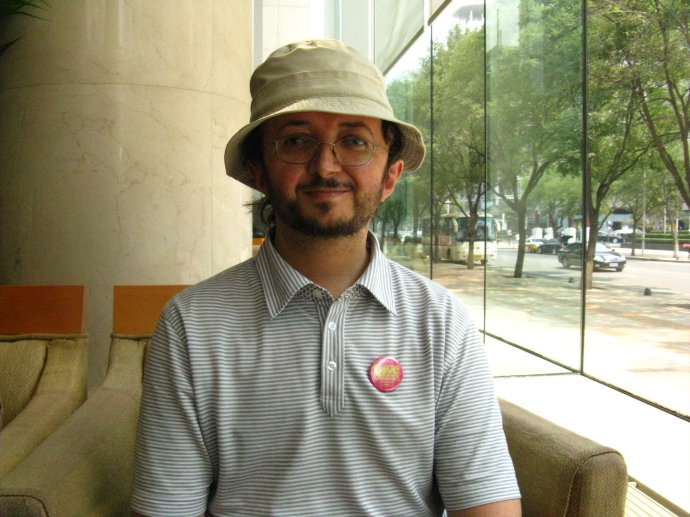
-
-
-
-
-
-
身体荣光
The Glory of the Body
Philippe Rahmy(瑞士病友)/图并文 万芳/译
《身体荣光》是一部探讨身体常态问题的作品。它直面美丽与技巧的标准,打开了一片身体与图片实验的天地。它试图将身体上的“不美好”与技术上的拙劣转变成一个我们可以去分享并且热爱的形象。
人道主义宣称:“人是衡量一切事物的标准。”但是当人被科学、宗教、政治所衡量,当人面对社会的标准,他会发现自己失去了价值。“常态”的概念能适用于人的身体吗?
The Glory of the Body is exploring the question of physical normality, opening a field of experimentations in which the body, as well as the picture, are facing the standards of beauty and of technique: trying to translate physical “disgrace” and technical poverty into a figure we can share, and love.
Humanism states that "Man is the measure of all things", but when man is measured by science, by religion, or by politics, when he is confronted with society standards, he will find himself being invalidated. Can the concept of normality apply to the human body?
It certainly can't. Aiming to demystify and to criticize beauty, my photographic work stands for the acceptance of minorities and for social justice.

这个过程是怎么开始的?十年前,我担任过一个关于身心障碍的摄影比赛的评委。那些作品是由瑞士洛桑的一些艺术学生拍摄的。我很惊奇地发现,他们中没有一个人在作品中展现了身心障碍人士或者他们的身体。没有一张照片展示了一位身心障碍者真实的身体。学生们使用了一些比喻以及诗化的方式去展示一些关于身心障碍的问题而不是使用直接明晰的方法。为什么他们会这么做?与他们照面过后,我意识到他们在这个问题上感到非常不舒服,并且他们无法想象在不加任何修饰、不给予任何所谓适当的影像、不采取一些手法减少令人烦扰因素的情况下去展示一位身心障碍者的躯体。换句话说,他们赞成一个通常的观点,一些躯体并不美丽到可以被展示,或者说,更糟糕,一些躯体在艺术上没有任何价值。因为这些躯体在大多数人眼中是脆弱的、怪异的,这种差异性会激发一种最为原始的恐惧。
那么,脆弱与怪异可以变得美好吗?美丽是否要比肤浅的外貌上的协调要更加复杂一些?是的,的确如此。我确信,残损的身体与其他身体的相似多于区别。这样的认知让我开始寻找他们之间的相似性。这些图片并不是想要告诉人们真相或者说坚持真实,而是想要证明并且展现是哪些因素让人类变得平等。这些证据必须要足够精确,以便揭露每个生命广袤的平凡。
那一天终会到来,当残损的身体,当任意一个人的身体,都不再会引起惊愕;那一天终会到来,当每一个人都能将自己的奇异视为让自己融入真实的纽带。
How did this process start? Ten years ago, I was a jury member of a photographic contest about disability. The photos were shot by art students in Lausanne, Switzerland, and I was surprised to see that no one showed a disabled person or body. There was no picture depicting the "true" body of someone with a disability. The students used a metaphoric and poetic approach to illustrate the question of physical disability instead fo being explicit. Why did they react like this? After having met them, I realized that they felt very uncomfortable with this question and that they could not imagine showing a disabled body without trying to pimp it up, to give it a more “appropriate” image, a less “disturbing” one. In other words, they where subscribing to the very common view that some bodies are not beautiful enough to be shown, or, even worse, that some bodies are unworthy of arts, because they a perceived by most people as being vulnerable and strange, an otherness that provokes a primordial fear.
Can vulnerability and strangeness be beautiful? Is beauty something more complex than just a superficial harmony of features? Yes it is. I am sure that disabled bodies are similar to other bodies than they differ from them. This certainty makes me look for resemblance. These pictures are not conceived to tell the truth, or to stick to reality but to testify and to show what makes all human beings equal. This testimony has to be precise enough to reveal the immense triteness of each life.
The day will come, when the disabled body, when anybody, will no longer be subject to astonishment, the day will come, when everyone will face his own singularity as the link which integrates himself into reality.

有关规范的问题是这场争论的核心。我认为规范只能应用于物体之上。例如,一个物体加工得是否正确?它能否按照预想的那样使用?那些规范是否能够解决这样或者那样的问题?等等。但是,规范并不能够使用于生命体之上,因为生命体并不像物体那样由人制造,他们是从母体中孕育出来的。生命体的外表是他们特性中的一部分,无所谓好与坏,无所谓美丽与丑陋。无论一具身体看起来是什么样子,它都是一个完美的世界,都是真实中独立存在的部分。我认为“人类的常态”这一议题是令人无法忍受的暴力。这是一个野蛮的议题,因为它不期待任何答案,只是帮助巩固了价值上的歧视,制造了个体间的等级。
谈论身心障碍从很多方面来说都是一件棘手的事情。那些因为出生、疾病或者事故而变得脆弱的人们常常会在外表上看起来有些与众不同。由于身心障碍,他们会有一些特殊的需求,这些需求让他们的家庭、同事、雇主当然也包括整个社会在照料他们时需要更有效率。这样一来,身心障碍人士在社会中也有了平等的机会,并且向人们展示,身心障碍者在集体的社会结构中也有自己的角色,并且是非常重要的角色。但在另一方面,谈论身心障碍意味着要根据该事实创造出关于它自身权利的分类,这是一个关于无法参与到社会职责、无法参与到他人的喜怒哀乐中的人群的分类。因此,即便一个人考虑到了身心障碍人士的最大利益,往往也会将他们放在第二等的位置上。
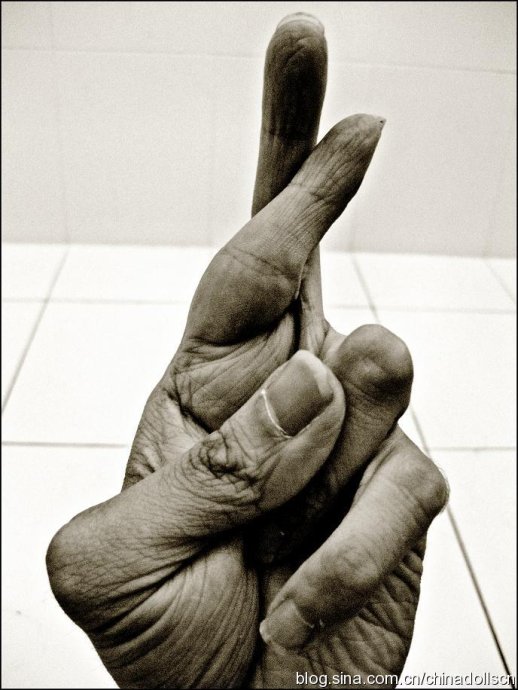
The question of norm is at the core of this debate. But I claim that norms can only be applied to objects. Has this object been correctly manufactured, can it be used like it is supposed to be? Do these rules allow to solve this or that problem? etc. But the question of norm cannot be applied to living beings and even less to human ones, because they have not been produced, like things, but have been born. Their appearance is part of their identity, it is neither good, nor bad, neither beautiful nor ugly. A body is a perfect world, no matter what it looks like, an autonomous part of reality. I consider that the question of the "normality of a human being" is of an intolerable violence. It is a brutal question, because it does not expect any answer but helps to consolidate value discriminations, to create a ranking of individuals.
To speak about handicap is very tricky enterprise in many ways. People that have been made more vulnerable by their birth, their health or an accident often show differences in their look. They have special needs due to their handicap that other people have to attend to efficiently (family, colleagues, employers, but also society in general). This adequate answer allows handicapped people to have a fair chance in society and to show that they also have a role, an important role to play in the collective social structure. But on the other hand, to speak about handicap means ipso facto to create a category in its own right, an under-category of human beings who cannot participate in the responsibilities, in the sorrows and joys of everyone else. Therefore, even having the best interests of handicapped people in mind, you relegate them into a position of secondary order.
那么,我们能做些什么?我相信,无论我们是否是身心障碍人士,我们都要承认,在这个问题上并没有什么完美的解答,也没有什么神奇的准则去解决针对身心障碍人士的偏见以及不公平的待遇。但是,我们必须要缓和那些态度所带来的负面影响。当然,借助法律体系是非常重要的,因为这是唯一保障权利的方法。但与此同时,社会大众也应该承担起责任,来改变自己以往既定的思路。我认为,这样的方式也能改变人们的感觉,改变他们体认这个问题的方式,给予他们一个新的关于身心障碍的陈述。我们要如何认识身心障碍?这是一个所有的组织都要扮演十分重要角色的领域。但是艺术同样可以通过将这个主题放置于一个全新的教义中来引起一场公开的辩论。其中,让身心障碍人士去创作一些能够感动社会大众的艺术作品是非常重要的,这些作品可以向人们表明,身心障碍人士对世界的感受与其他人没有任何差别,他们一样喜欢多样的社会交往,他们与日常生活的联系与他人并无二致。
So, what can you do? I do believe that whether we are disabled or not, we can collectively admit that there is no ideal answer, no magical formula to resolve once and for all our prejudices and the inequalities of treatment that are generated by them. But we must aim to alleviate their negative effects. Of course, going through the legal system is of tremendous importance as it is the only way to guarantee the rights, but also the duties of people on the collective scale in order to reform mentalities in a very concrete way. But I feel that it is also possible to change the feelings of people but changing the way they perceive the problem, but giving them a new representation of the so-called disabled. How do we consider handicaps? This is a field in which associations have an important part to play. But arts can also help to create a public debate by placing the theme in a completely new light. It is important to show that handicapped people create pieces of art that touch the general public, to prove that they don't do and feel things differently from anyone else, that they also like to have multiple social contacts, that they are connected to the everyday life like everyone else.
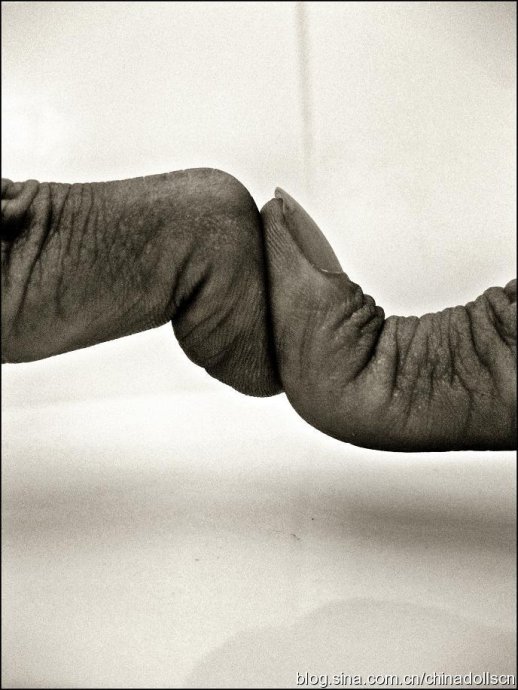
摄影并不是一个孤立的活动。它是一个开放的领域,你可以在其中加入任何自己看到的东西。当我将自己的作品介绍给别人的时候,我并不觉得这是我一个人的独角戏。我感觉自己被许多人包围着,我在讲述一个关于他们和我自己的故事。
我只是想说一些简单的话语,也只是想展示一些简单的图片。迷信以及缺乏知识让人们将身心障碍人士当做最为恐怖的存在,身心障碍人士将“脆弱”这一抽象概念具体地呈现了出来。胜利以及失败都是生活。我希望“身体荣光”这部作品可以安宁地表现出人们与自身恐惧的斗争,同时,它也代表了我们每一个人潜在的内心。我们的不同,我们的伤疤,我们的束缚都可以被改变成一些我们共享并且热爱的事物。
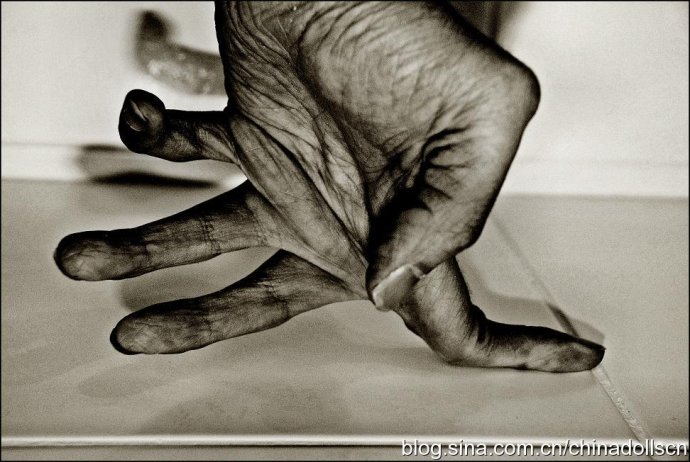
Shooting photos is not a lonesome activity. It is an open circle in which you welcome everything you see as part of your family. When I introduce my work to someone, I do not have the feeling of acting just by myself. I have the impression of being surrounded by many people and of telling a story which is mine as well as theirs.
I just want to say some simple words, I just want to show some simple pictures. Superstition and a lack of knowledge make people point out disabled persons as symbols of what scares them the most. A disabled person makes the abstract idea of vulnerability become present. Wins and losses are both conditions of life. I want The Glory of the Body to become the peaceful expression of everyone’s struggle against his own fear, but also to represent the potential hidden inside each of us. Our differences, our scars, our chains can be changed into something we share and love.
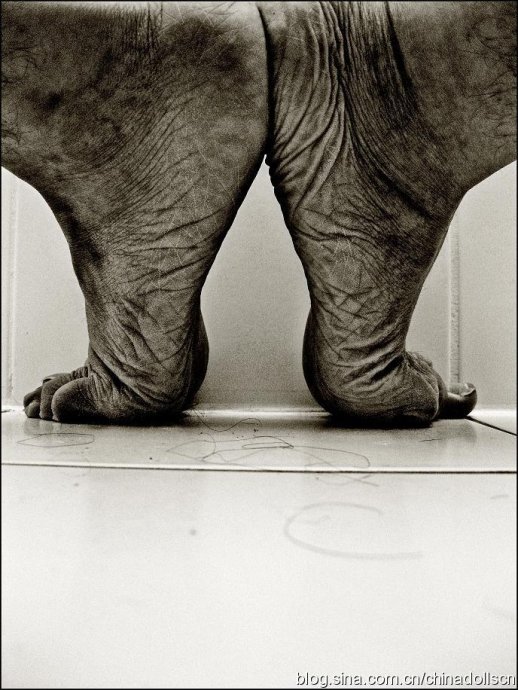
相关阅读:《瓷娃娃》专访瑞士OI作家Philippe

